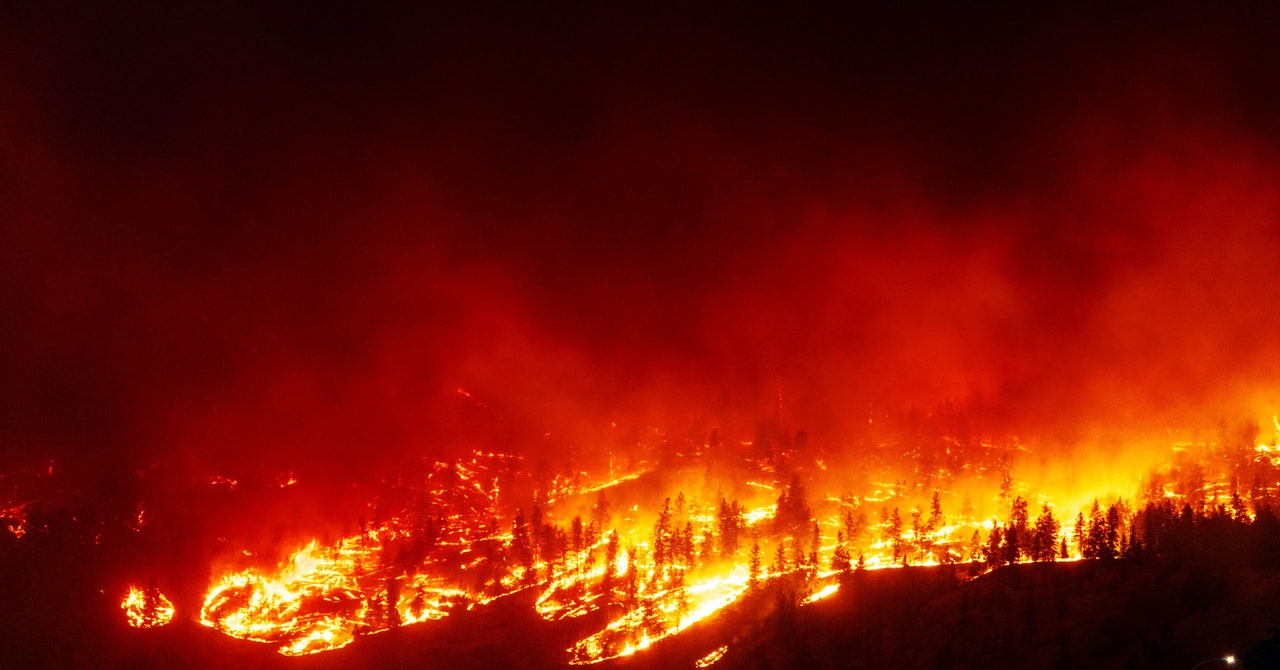
In a normal year, Rennick would expect a staff turnover of 20 percent, but next year will certainly be higher. To that end, Natural Resources Canada recently allocated CA$37.9 million ($27.9million) to recruiting, training, and retaining firefighters in high-risk zones. But several experts and politicians, including Flannigan, want federal officials to go further and are calling for the creation of a national firefighting service.
At present, there’s no single national strategy guiding wildfire management in Canada. A patchwork of provincial, territorial, and national park units instead share resources via the Canadian Interagency Forest Fire Centre. But the center, founded in 1982, has been overwhelmed by the scale of the current crisis. Historically, Canada’s wildfires were staggered across both time and geography. Now, huge fires are occuring well out of season and in regions previously less affected, including the Maritime Provinces and Northern Quebec and Ontario, all while the country struggles to increase and update its fleet of aging water bombers.
Coordination between woodland and urban firefighters is another challenge. In 2016, a fire at Fort McMurray in Alberta showed what happens when communication breaks down. The Beast, as it came to be known, took locals by surprise, resulting in a last-minute evacuation of 88,000 people on a single highway through flames and embers. An inquiry into the most expensive natural disaster in Canadian history reported that local and provincial authorities weren’t even sharing the same radio frequencies. “This was particularly problematic when it came to air attack,” the report found. “Alberta Forestry aircraft had no way to forward a direct message to municipal firefighters.” When the fire did reach the city, local emergency management learned about it from social media.
Such catastrophes, combined with this record-breaking summer, have also led Canada to consider the creation of a bureau similar to America’s Federal Emergency Management Agency (FEMA). In June, Bill Blair, then Canada’s emergency preparedness minister, told the CBC that his government had begun discussions with the head of FEMA about creating a Canadian equivalent, as well as a joint agency similar to the North American Aerospace Defense Command, or NORAD, to manage cross-border emergencies—including wildfires.
Public Safety Canada, the country’s closest equivalent to FEMA, struggles to address large-scale events because of its broad focus, of which only a small part is dedicated to emergency management. The agency spends just $4.70 per Canadian for national emergencies, compared to FEMA’s budget of $87.87 per American. Public Safety Canada’s primary role this summer has been to deploy the armed forces to assist in building fire breaks and assist in evacuations.
Wildfires have long been a part of the Canadian landscape, but urban development over the past 70 years, especially in the west, have created a new problem. Today, more people than ever are living right next to nature, with forests butting right up against new urban developments. The staggering destruction and death toll of fires in Paradise, California, in 2018, and this month’s tragedy on Maui, were partly attributed to the intermingling of urban development and vegetative fuels.
Despite its vast size, Canada faces similar problems. “We’re reaching a point where creation of some agency like FEMA has become a necessity,” says Ali Asgard, a disaster and emergency management professor at York University in Toronto. He adds that Public Safety Canada, or perhaps a future emergency management agency, also needs to do more to prepare communities for managing hazardous pollution levels. As smoke and flames cross the southern border, pressure is mounting on Canadian officials to ensure there isn’t a repeat of this summer—or worse.

